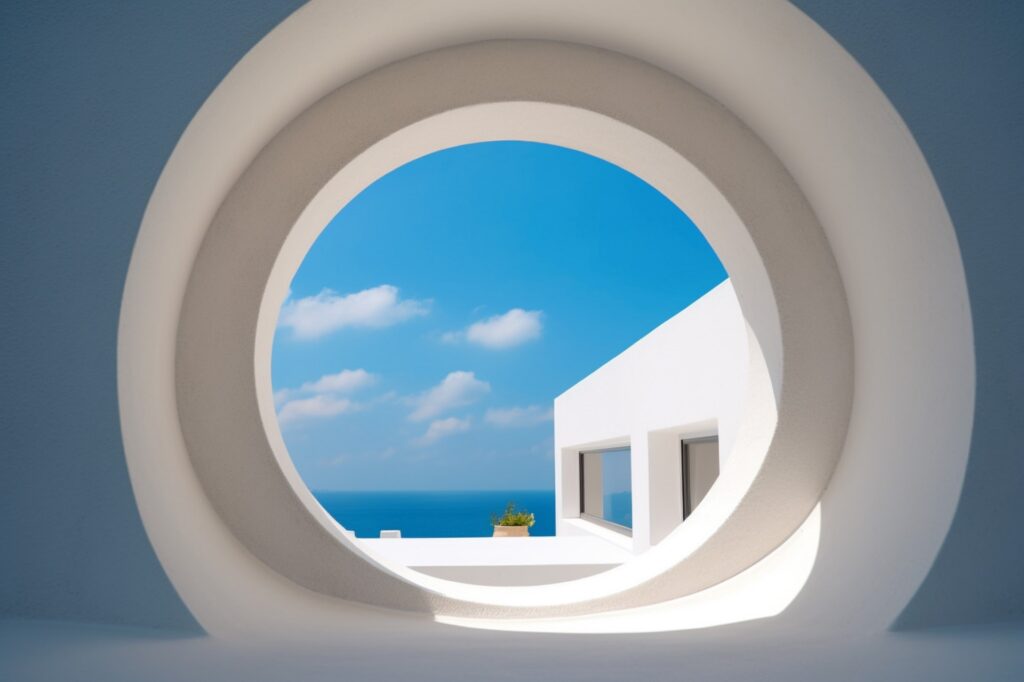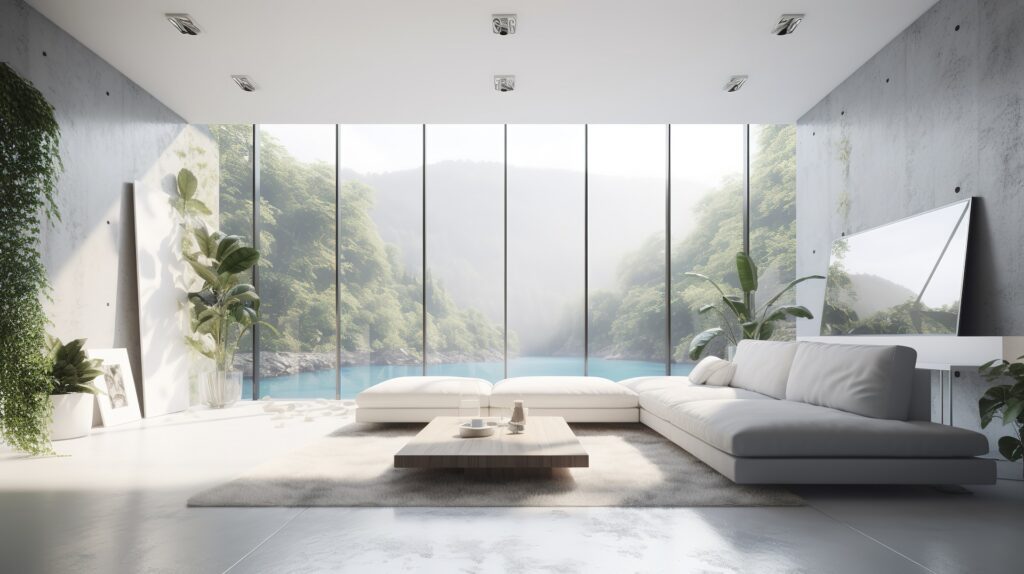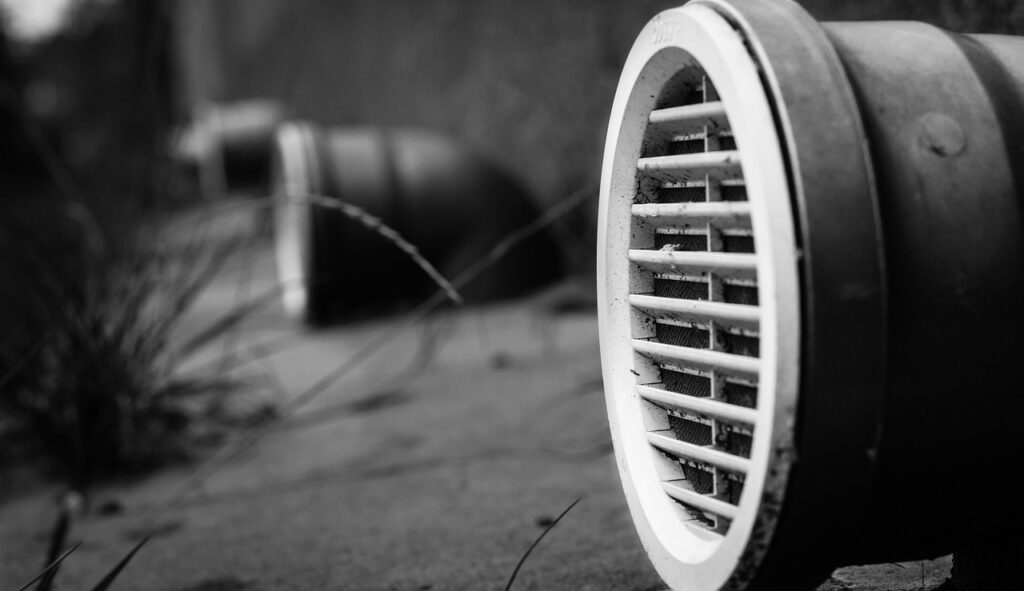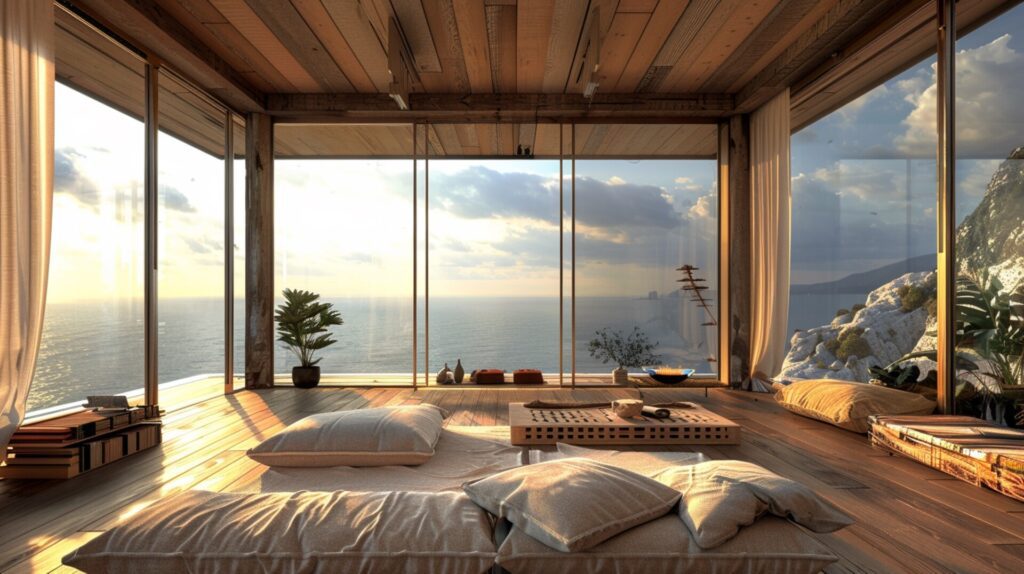Designing a villa to make the most of natural ventilation not only enhances comfort but also promotes better air quality and energy efficiency, especially in tropical or warm climates. Imagine reducing your reliance on air conditioning and lowering your energy costs, all while creating a sustainable, eco-friendly living space. By thoughtfully incorporating architectural elements that encourage the flow of natural breezes, you can transform your villa into a place that feels connected to its environment, allowing fresh air to move through the space and maintain a pleasant indoor temperature.

This approach doesn’t just provide immediate benefits for the occupants, but also contributes to a more sustainable design—something increasingly important in modern architecture. By harnessing natural airflow, you create a living environment that is more aligned with nature and supports healthier indoor living. In this article, we’ll explore the best practices for designing your villa to take full advantage of natural breezes, offering practical tips and techniques to improve ventilation and maintain a comfortable, energy-efficient space.
Orientation of the Villa
The orientation of your villa is a key factor in capturing natural breezes and maximizing natural ventilation. Positioning the villa to align with prevailing wind patterns allows for continuous airflow, reducing the need for mechanical cooling and enhancing comfort. By thoughtfully designing the layout and placement of windows and openings, you can ensure that fresh air circulates effectively throughout the indoor spaces, maintaining a balanced and comfortable atmosphere.
Align with Prevailing Winds
In tropical or coastal regions, the prevailing winds often blow consistently in specific directions, offering a natural solution for ventilation. When designing your villa, it’s essential to study local wind patterns and align the building to take full advantage of these natural breezes. By positioning key openings, such as windows and doors, to face the direction of these winds, you can allow airflow to enter and move naturally through the villa, keeping the interior cool and fresh year-round.
For instance, large windows or openings positioned to face the prevailing winds ensure that air is continuously circulated, flushing out warm, stale air and replacing it with cooler, fresh breezes. This not only enhances indoor air quality but also reduces the dependence on air conditioning, contributing to an energy-efficient design.
Use Open Spaces to Channel Air
The strategic use of open spaces between rooms, as well as courtyards and open-plan living areas, can significantly improve cross-ventilation throughout your villa. This design strategy ensures that airflows naturally from one side of the villa to the other without obstruction, creating a more comfortable and ventilated indoor environment.
By incorporating open spaces, you allow air to circulate freely, moving through the villa from multiple entry points. Adding large openings, doors, or ventilation grills in key areas ensures that air can flow continuously, effectively cooling the space without the need for artificial cooling systems. Open-plan designs not only enhance the flow of air but also give the villa a sense of openness, connecting indoor and outdoor spaces and improving the overall living experience.
This approach to designing with natural ventilation in mind is a practical and sustainable way to ensure your villa remains comfortable, cool, and energy-efficient.
Heveatecture’s Approach to Natural Ventilation in Villa Design
At Heveatecture, we prioritize designing villas that not only embody luxury and comfort but also harness the natural elements of their environment. One of the key aspects of our design philosophy is maximizing natural ventilation to ensure that your villa remains cool, comfortable, and energy-efficient. Our team deeply understands the importance of integrating natural breezes into architectural design, especially in tropical and warm climates, where proper airflow can make a significant difference in the overall living experience.
Designing with Nature in Mind
Heveatecture takes a holistic approach to villa design by ensuring that every element of the structure works in harmony with its natural surroundings. From the initial planning stages, we study the prevailing wind patterns to align the villa’s orientation with these natural breezes, allowing the building to breathe and cool itself efficiently. Whether it’s incorporating cross-ventilation through large, strategically placed windows or using high ceilings to create optimal air circulation, our designs are meant to enhance comfort while reducing reliance on artificial cooling systems.
Using Natural Materials for Sustainable Living
We also emphasize the use of natural materials such as wood, bamboo, and stone in our designs. These materials not only add to the aesthetic appeal of the villa but also help in regulating indoor temperatures by promoting better airflow and reducing heat retention. In addition to their thermal benefits, natural materials create a healthier indoor environment by allowing the villa to naturally ventilate, improving air quality and comfort.
At Heveatecture, we believe that sustainable design should be seamless, blending beauty and function. Our villas are not just homes—they are carefully curated environments where architecture and nature come together to provide the ultimate living experience. By leveraging the principles of natural ventilation, we create spaces that feel connected to the landscape while enhancing energy efficiency and sustainability.

Strategic Window Placement and Design
Windows are one of the most critical elements in optimizing natural ventilation in your villa. Thoughtfully placing and designing windows can significantly enhance airflow, help regulate indoor temperatures, and create a consistently breezy atmosphere. By maximizing natural ventilation, you can reduce reliance on mechanical systems like air conditioning, making your villa more sustainable and energy-efficient.
Maximize Cross-Ventilation
A key strategy for achieving effective natural ventilation is to implement cross-ventilation. This involves placing windows or openings on opposite sides of a room or villa, allowing air to flow freely from one side and exit through the other. Cross-ventilation enables a continuous exchange of fresh outdoor air for stale indoor air, improving air quality and maintaining a balanced temperature inside the villa.
For optimal airflow, it’s essential to install large, operable windows that encourage natural breezes to circulate. High-level windows can help warm air escape, while lower-level windows draw in cooler air, creating a natural cooling system that refreshes the space without relying on electricity. By positioning these windows strategically, you ensure that air moves efficiently through the entire villa, maintaining comfort throughout the day.
Use Louvered Windows for Flexibility
Louvered windows are an excellent solution for villas in tropical or coastal regions that require constant airflow. These windows feature horizontal slats that can be angled to control the flow of air while maintaining privacy. This flexibility makes louvered windows ideal for maximizing ventilation without sacrificing the villa’s design or aesthetics.
One of the key advantages of louvered windows is their ability to remain partially open even during rain, allowing air to continue circulating while preventing moisture from entering the villa. In climates with frequent rain showers, this design feature ensures that natural ventilation isn’t compromised by the weather. Moreover, these windows allow you to adjust the amount of air entering or exiting the room, giving you control over the indoor climate without needing to rely on artificial cooling methods. This not only improves comfort but also contributes to the overall energy efficiency of the villa.
Incorporating Ventilation Openings and High Ceilings
Beyond windows, integrating ventilation openings and high ceilings into your villa design can greatly enhance airflow and natural ventilation. These architectural features allow warm air to rise and escape through vents or high windows, while drawing cooler air into the living areas. This continuous flow of air helps regulate the indoor temperature, making the space more comfortable, especially in tropical or warm climates.
Add Ventilation Grilles and Roof Vents
Ventilation grilles and roof vents are effective tools for improving airflow in a villa. Placing ventilation grilles at key locations, such as along walls, doors, or even partitions, enables air to flow freely between different rooms, enhancing the overall ventilation system. For example, these grilles can allow air to circulate between bedrooms and living areas without requiring windows in every space. This is particularly beneficial for rooms that may not have large windows or direct access to natural breezes.
Roof vents are another valuable addition. Since warm air naturally rises, placing roof vents strategically allows this trapped air to escape, reducing the overall temperature inside the villa. This is especially important in areas such as kitchens or living rooms where heat tends to build up more quickly. By releasing hot air, roof vents help maintain a cooler indoor environment throughout the day, preventing heat accumulation and reducing the need for artificial cooling systems like air conditioning.
Together, ventilation grilles and roof vents create a more efficient and continuous airflow, ensuring the villa remains cooler and more comfortable even during the hottest periods.

Use High Ceilings for Air Circulation
High ceilings are an excellent design feature that significantly improves natural ventilation by allowing warm air to rise away from living spaces. The height provides more room for the air to move upwards, leaving the lower parts of the room cooler and more comfortable. This is particularly useful in warm or tropical regions, where managing indoor heat can be challenging.
When paired with ceiling fans or other air-enhancing architectural features, high ceilings can further improve the circulation of cool air and reduce the overall reliance on air conditioning. Ceiling fans can push air downwards, ensuring that cooler air continues to flow throughout the space, while the high ceilings prevent warm air from stagnating near the ground.
Designing with high ceilings ensures that hot air is quickly drawn upward and out of the living areas, making the environment below much more pleasant, even during peak heat. This combination of high ceilings and ventilation systems not only contributes to a more comfortable indoor climate but also supports sustainable and energy-efficient living by minimizing the need for mechanical cooling systems.
Using Natural Materials to Enhance Ventilation
Incorporating natural materials into your villa’s design not only adds to its aesthetic appeal but also plays a crucial role in optimizing natural ventilation. Materials like wood, stone, and bamboo have unique thermal properties that help regulate indoor temperatures while creating a healthier, more comfortable environment. By selecting sustainable materials, you can improve airflow and indoor climate without relying heavily on mechanical systems, contributing to both comfort and energy efficiency.
Optimize Wall and Roof Materials
Choosing the right wall and roof materials is key to enhancing natural ventilation and temperature regulation within your villa. Materials such as wood and bamboo are known for their natural insulating properties. These materials allow for better temperature control by regulating heat without trapping it inside the building. Their breathability also helps manage indoor humidity, making the interior more comfortable, especially in tropical climates where humidity can be a concern.
By absorbing and releasing moisture naturally, wood and bamboo maintain a balanced indoor environment, preventing the buildup of stale, hot air. This promotes a cooler indoor space and improves air quality, making the villa more enjoyable to live in throughout the year.
Additionally, roofs made from natural, sustainable materials such as thatch or clay tiles offer excellent thermal performance. These materials effectively disperse heat, ensuring that the interior of the villa remains cool while still allowing for natural ventilation. Thatch roofs, in particular, provide great insulation while still allowing air to circulate. Clay tiles, with their heat-resistant properties, help prevent excessive heat from entering the villa, reducing the need for air conditioning.
By using these sustainable materials, you also align your villa’s design with eco-friendly architecture practices, helping to reduce its carbon footprint. This approach to building not only enhances natural airflow but also contributes to a more environmentally conscious and sustainable lifestyle.
Maintain Outdoor Landscaping for Better Ventilation
Outdoor landscaping plays a vital role in optimizing natural ventilation for your villa. The strategic placement of trees, shrubs, and other outdoor structures can either enhance or obstruct the flow of air around and into the building. Thoughtfully designed landscapes help to channel natural breezes, reduce solar heat gain, and contribute to a more comfortable indoor environment.
Plant Trees and Shrubs Strategically
Planting trees and shrubs around your villa can greatly improve natural ventilation by guiding cool breezes into the home. Trees can serve as windbreaks, helping to deflect strong winds and redirecting gentle breezes into outdoor living areas or toward windows and doors, enhancing airflow through the villa. To maximize these benefits, choose local or native species that are well-suited to your region’s climate, as they will require less maintenance and thrive in the local conditions.
For example, in tropical regions, planting tall, wind-resistant trees near the villa can create a natural funnel for air, pushing cool breezes into the home while blocking excessive gusts. This improves cross-ventilation and helps maintain a cool indoor temperature, reducing reliance on mechanical cooling systems like air conditioning.
In addition to their role in enhancing ventilation, trees and shrubs also help to reduce solar heat gain by providing natural shade. Shaded outdoor areas, such as patios or gardens, remain cooler throughout the day, preventing the surrounding environment from heating up excessively. This natural shading effect minimizes the amount of heat that penetrates the villa, ensuring that the interior stays cooler, especially during peak hours of sunlight.
Incorporating well-placed landscaping not only enhances the overall aesthetic of your villa but also contributes to improved airflow, energy efficiency, and comfort by utilizing the natural environment to its full potential.

Conclusion
Designing a villa with natural ventilation in mind is an essential strategy for creating a comfortable, sustainable, and energy-efficient living space. By carefully considering the orientation of the villa, optimizing window placement, and incorporating features such as ventilation grilles, high ceilings, and natural materials, you can enhance airflow and reduce the reliance on artificial cooling systems.
The integration of outdoor landscaping, with strategically placed trees and shrubs, further enhances natural breezes while providing shade that reduces solar heat gain. Together, these design elements create a villa that not only aligns with sustainable architecture practices but also fosters a healthier, more comfortable indoor environment.
Incorporating these best practices into your villa design ensures that you harness the natural elements of your surroundings, making your home both beautiful and functional, while contributing to long-term energy savings and environmental sustainability.
FAQs
Natural ventilation works by using the movement of outdoor air to cool and ventilate indoor spaces. This approach reduces the need for mechanical systems like air conditioning by allowing air to naturally flow through the villa, refreshing and cooling the environment.
Cross-ventilation occurs when air flows from one side of a room or villa to the other, replacing warm air with cooler, fresh air. This method is essential because it enhances air quality and naturally regulates indoor temperatures, ensuring a comfortable living space.
Proper window placement, particularly when windows are positioned opposite each other for cross-ventilation, significantly improves airflow. This setup encourages a continuous exchange of fresh air throughout the villa, keeping the interior cool and well-ventilated.
High ceilings allow warm air to rise, creating a cooler space below. By improving air circulation, high ceilings help reduce the need for air conditioning and keep indoor areas more comfortable, especially in warmer climates.
Yes, louvered windows are highly effective for ventilation. They provide flexibility by allowing you to adjust the flow of air while maintaining privacy. Additionally, they can remain open during rain, enabling natural airflow without letting moisture inside.
Natural materials like wood and bamboo help regulate temperature by allowing the villa to “breathe.” These materials also assist in controlling humidity and keeping the interior cooler, contributing to both comfort and sustainability.
Roof vents enable hot air to escape from the top of the villa, which promotes better airflow. By releasing trapped warm air, roof vents help maintain a cooler interior and support natural ventilation systems.
Trees, shrubs, and other landscaping features can be strategically placed to channel breezes toward the villa, improving airflow. They also provide shade, reducing heat around the villa and further contributing to a cooler indoor environment.
In villas with smaller rooms, you can enhance airflow by installing ventilation grilles, high windows, and adopting open floor plans. These elements ensure that air moves freely, even in spaces that may not have large windows or direct access to breezes.
The orientation of your villa is critical for maximizing natural breezes. Aligning the villa with prevailing winds helps reduce the need for mechanical ventilation systems by allowing natural airflow to cool and ventilate the interior spaces effectively.

